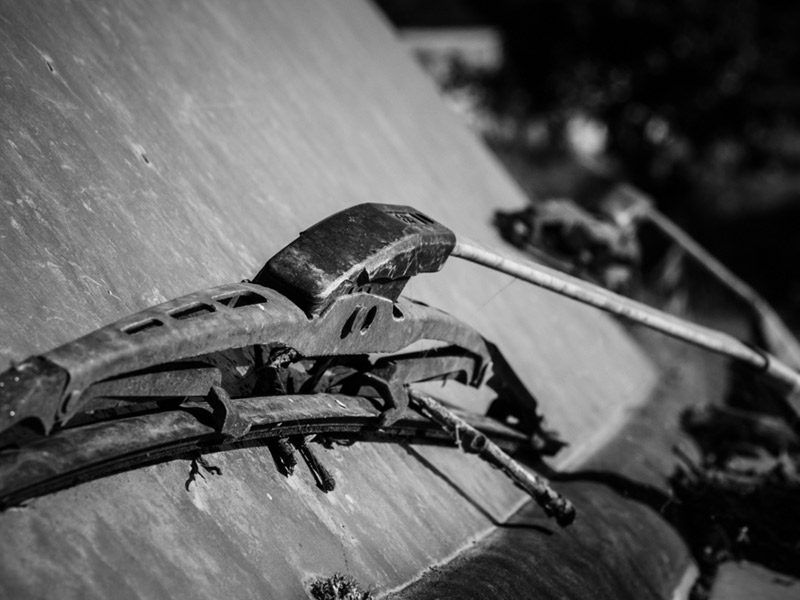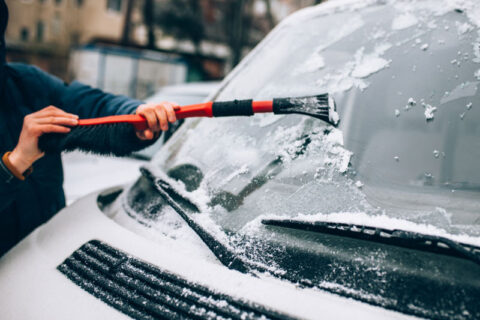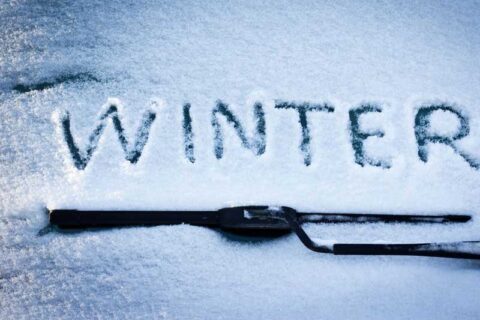When Rust Becomes a Problem for Your Windshield?

Whether you detect the odor of moisture in your car or you see other signs such as fogged-up windows, rust stains or wet carpet, windshield leaks are one of those problems that can be a real frustration for drivers.
Primarily, the frustration comes because you can’t always tell where the water is coming from. Just because the carpet is wet in the trunk does not mean that is where the leak is located. Cars can slope, water comes in from the front floor area and flows down underneath the seats through the channels under the carpeting, and fills up the rear floor area. If this is not fixed, the car could develop mold, mildew, and rust. For the past 10 or 15 years, the manufacturers have been using an underpadding that will send off an odor once it gets wet and you get mold spores. So if you smell an odor in your vehicle, you probably have a water leak. This means that rust has probably already developed.
Possible Causes
One possible source of the leak is an unnoticed pinhole in a seam hidden under the molding, while small this can cause big problems. Windshield leaks actually happen less than they once did. Windshields used to be put in with a rubber gasket, then [manufacturers] went to a butyl tape and now they have gone to urethane and the windshield is actually part of the structure of the body. Still, there can be skips in the urethane and as a result, you don’t get a good seal. Or, if the windshield itself has been replaced at some point, there’s also a chance of windshield leaking if a proper seal isn’t obtained. To test for a leak, gently shower the car with water. The lower the water pressure used, the faster the vehicle will actually leak. If a hose is put on full force, the water will bounce right off. Also, if you have a wind noise in the vehicle, use soap to detect the leak because where wind can get in, so can water. Take soap on a wash mitt and go all around the window and then you turn the heater blower on high defrost. Make sure the windows and the doors are all closed, and when you stand outside, you’ll see bubbles coming out. If you find the leak, it can be relatively easy to do a windshield leak repair with the right materials. Never use silicone. Silicone expands and contracts in the heat and the cold. What’s more, once you’ve put silicone on a seam, you can’t reseal it with the proper sealant because it won’t adhere to the silicone. Instead, he urges those seeking to fix pinholes to use special seam-sealers that can be acquired online. These sealers come out of a tube and can be easily applied. If the pinhole is underneath the molding on your windshield, the molding can be pried up a bit and the seam-sealer squeezed in. It will dry in just a couple of minutes and the molding can be pushed back in place. Meanwhile, if the leak is caused by a skip in the windshield sealant, use something that always stays pliable, like a butyl sealant. To apply this, a caulking gun is needed. Use an air-caulking gun so that it’s done under pressure. After letting the sealant dry for a few minutes, repeat the water test. If all goes well, you will be free of leaks and happy to be in your car no matter the weather.
If you are unable to repair it by yourself, make sure you have insurance coverage.
Tips for Telling if You Need to Change Your Seal, in No Particular Order
Be observant – when parked in the sun after rain or a car wash do you notice any fog developing on the windows? If so, run your water hose directly over the windshield while watching from the inside. If you do see water droplets on the inside of the windshield, then the seal is faulty and needs to be replaced.
Listen – if you are hearing wind noise while driving then there’s a good chance that the seal is faulty. If you suspect a leak simply turn off the radio and A/C and listen to your car while going down the highway and if you hear any whistling or air blowing, you know you have a problem.
Inspect other areas – check for the faint white residue of mineral deposits or stains on the dashboard from evaporated water. Look for rust behind the main column of the dashboard, underneath the carpeting, and along the inside bottom of the door panels. Rust requires moisture and any sign of it on the interior of your vehicle is a sure sign that there is a leak somewhere.
Examine the seal itself – whenever you fill up, take a couple of minutes to give the windshield a once over. Look for ‘dry-rot’ on the seal or a deep red spot on the edge of the glass indicating that rust is forming within the groove.
Take a whiff – Your carpet and padding can easily conceal moisture and result in unpleasant mildew and mold. A musty smell is a definite indicator that you have sprung a leak and mildew that is limited to the front passenger area and the floorboard is a good indicator that the windshield seal is the culprit.
Soap that windshield – using a wash mitt, lather a good amount of soapsuds all around the edges of the glass. Close all doors and windows, turn your defrost on high and stand outside. If you see bubbles forming along with the seal, it is a clear sign that the seal needs replaced.
These simple steps above can help you quickly determine whether the seal on your windshield needs replaced or if there is a possible issue elsewhere. Remember, a faulty seal can result in expensive damages and repairs and even result in serious injury in the event of an accident. Give us a call and ensure that it is replaced by professionals that care about your vehicle as much as you do.


